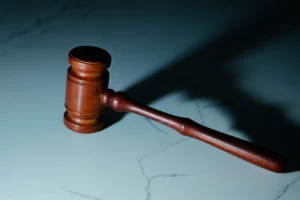Superficies in Thailand. Superficies is a lesser-known yet significant legal concept in Thailand that plays a crucial role in the country’s property law. Understanding the concept of superficies is vital for individuals and businesses dealing with real estate in Thailand, particularly when it comes to building or owning structures on land that they do not own. This article delves deeply into the legal framework of superficies in Thailand, its practical applications, the benefits and challenges it presents, and its importance in the broader context of property rights in the country.
Understanding Superficies: Legal Framework
In Thailand, the legal concept of superficies is governed by the Civil and Commercial Code (CCC), which outlines the rights and obligations associated with this type of property right. Superficies is defined under Section 1410 of the CCC, where it is described as the right to own buildings, structures, or plantations on land owned by another person. The person who holds the right of superficies is known as the superficiary.
1. Creation of Superficies
- Contractual Agreement: Superficies can be established through a written agreement between the landowner and the superficiary. This agreement must be registered with the Land Department to be legally enforceable.
- Duration: The right of superficies can be granted for a specified period, for the lifetime of the superficiary, or indefinitely, depending on the terms agreed upon by both parties.
- Inheritance: If the superficies is granted for a fixed term or for the lifetime of the superficiary, it is inheritable and can be passed on to heirs unless otherwise stated in the contract.
2. Rights of the Superficiary
- Ownership of Structures: The superficiary has the right to own any buildings, structures, or plantations on the land. This ownership is distinct from the ownership of the land itself, which remains with the landowner.
- Transferability: The right of superficies can be transferred, sold, or mortgaged independently of the land. However, the transfer must also be registered with the Land Department to be valid.
- Protection Against Eviction: The superficiary is protected from eviction as long as the agreement is in effect and the terms of the contract are honored.
3. Obligations of the Superficiary
- Maintenance of Structures: The superficiary is typically responsible for the maintenance and upkeep of the buildings or structures on the land.
- Compliance with Land Use Regulations: The superficiary must comply with local land use regulations and building codes. Failure to do so can result in the revocation of the right of superficies.
- Payment of Fees: While the superficiary may not be required to pay rent for the use of the land, they may be obligated to pay registration fees or other charges as stipulated in the agreement.
Practical Applications of Superficies in Thailand
Superficies is particularly useful in various scenarios involving real estate in Thailand. Its flexibility allows for a range of applications, from residential to commercial use.
1. Residential Use
- Foreign Ownership: One of the most common uses of superficies in Thailand is by foreign nationals who wish to build or own a house on land that they cannot legally own. While foreigners are generally prohibited from owning land in Thailand, they can acquire the right of superficies to own structures on leased land.
- Inheritance Planning: Superficies can be a strategic tool in estate planning, allowing individuals to ensure that their heirs can continue to benefit from the property without owning the land.
2. Commercial Use
- Business Operations: Businesses, especially those owned by foreigners, may use superficies to construct and own factory buildings, warehouses, or other commercial structures on leased land. This allows them to operate without violating land ownership restrictions.
- Agricultural Ventures: Superficies is also used in agricultural projects, where companies or individuals cultivate crops or establish plantations on land they do not own.
Benefits of Superficies
The right of superficies offers several advantages for both the superficiary and the landowner, making it an attractive option in various property arrangements.
1. Flexibility and Security
- Long-Term Security: For the superficiary, superficies provides long-term security in the use and ownership of structures, even though they do not own the land. This is particularly beneficial in cases where long-term investments in construction are made.
- Customizable Terms: The terms of the superficies agreement can be tailored to the needs of both parties, including the duration, specific rights granted, and any conditions for termination.
2. Cost-Effectiveness
- Lower Initial Investment: For businesses and individuals, acquiring the right of superficies can be more cost-effective than purchasing land outright, especially in prime locations where land prices are high.
- Reduced Land Acquisition Costs: Since the superficiary does not need to purchase the land, they can allocate more resources to the development and improvement of the property.
3. Legal and Tax Benefits
- Legal Protection: Superficies provides legal protection against eviction and ensures that the superficiary’s investment in the property is safeguarded.
- Potential Tax Advantages: Depending on the terms of the agreement and the specific circumstances, there may be tax advantages associated with holding a superficies rather than outright ownership of the land.
Challenges and Considerations
While superficies offers numerous benefits, it is not without its challenges. Both superficiaries and landowners must carefully consider these challenges before entering into a superficies agreement.
1. Potential for Disputes
- Ambiguities in Agreements: Disputes can arise if the terms of the superficies agreement are not clearly defined. Issues such as the duration of the superficies, the rights and responsibilities of each party, and conditions for termination should be explicitly stated to avoid misunderstandings.
- Land Use Conflicts: Conflicts may occur if the superficiary’s use of the land interferes with the landowner’s plans or if there are changes in zoning laws or land use regulations.
2. Termination and Renewal
- Uncertainty at Termination: When a superficies agreement comes to an end, the superficiary may face uncertainty about the future of their investment in the property. Negotiating the renewal of the agreement or the terms of relinquishing the structures can be complex.
- Loss of Rights: If the superficies is not renewed or if the superficiary breaches the agreement, they may lose the right to the structures on the land, leading to significant financial losses.
3. Legal and Administrative Hurdles
- Registration Requirements: The process of registering a superficies agreement with the Land Department can be time-consuming and may require the involvement of legal professionals to ensure compliance with Thai law.
- Changes in Ownership: If the landowner sells the land to a third party, the new owner may not be obligated to honor the existing superficies agreement unless it is properly registered and recognized by law.
Conclusion
Superficies is a valuable legal tool in Thailand that allows individuals and businesses to own and manage structures on land they do not own. It provides flexibility, security, and cost-effective solutions for both residential and commercial purposes. However, it also comes with challenges that require careful consideration and legal expertise.
For those considering entering into a superficies agreement in Thailand, it is essential to work with experienced legal professionals who understand the intricacies of Thai property law. By doing so, both superficiaries and landowners can maximize the benefits of superficies while minimizing the risks associated with this unique property right.







